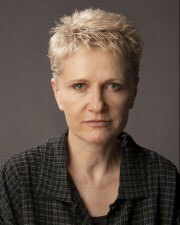Andrea Star Reese is a photojournalist/documentary photographer based in New York currently working in Indonesia.
In 2013, Disorder, a documentary reportage on conditions faced by Indonesians suffering from mental illness and undiagnosed mental disorders was exhibited at Visa Pour L’Image Perpignan, and Angkor Photo Festival., Published on Lightbox.time.com. the essay followed men and women in homes, shelters, schools and hospitals.
Previously, Urban Cave, a three-year project on long term unsheltered men and women living in makeshift housing in New York City was exhibited at Visa Pour L’Image 2010. Urban Cave received Best Social Documentary from The New York Photo Festival, was a finalist for POYI: World Understanding, a FotoEvidence book award finalist, and a 2010 Visa d’Or, Feature nominee. Most recently Urban Cave was exhibited at Theory of the Clouds Gallery, Kobe, Japan and at the 2013 Athens Photo Festival. Urban Cave has been published internationally. An ongoing update in preperation for a book is in progress.
Ms. Reese first worked in Indonesia directing a feature documentary film made up of short stories collected during the 2003-2004 run up to the country’s first direct democratic presidential election. The film covered issues pertinent to the time.
On staff at the International Center of Photography School, and a tutor at the 2013 Angkor Photo Festival Workshop, Andrea Star Reese is a 2010 fellow in Photography from the New York Foundation for the Arts and a reGeneration2 photographer.
Grants/Awards
2013 Finalist Fotoevidence Book Award
2012 American Photography 28: Best pictures from 2011_ (Chasing Stigma, working title, work in progress)
2011 Honorable Mention International Photo Awards_(Chasing Stigma,working title, as work in progress)
2011 Honorable Mention International Photography Award_Merapi’s Breath
2011 Finalist Picture of the Year World Understanding Urban Cave
2011 Included as part of AnthropoGraphia
2010 New York Foundation for the Arts Fellowship in Photography
2010 2nd place fotovisura award
2010 Nominated Visa d’or Feature
2010 Invited reGeneration2: Tomorrows Photographers Today
2009 3 Hon. Mentions International Photo Awards Editorial/Other, Editorial/Essay Deeper Perspective
2009 Finalist Magnum Expressions Award
2009 Best Social Documentary New York Photo Awards
2009 Honorable Mention Camera Club New York
2008 Les Visas de L’ANI
